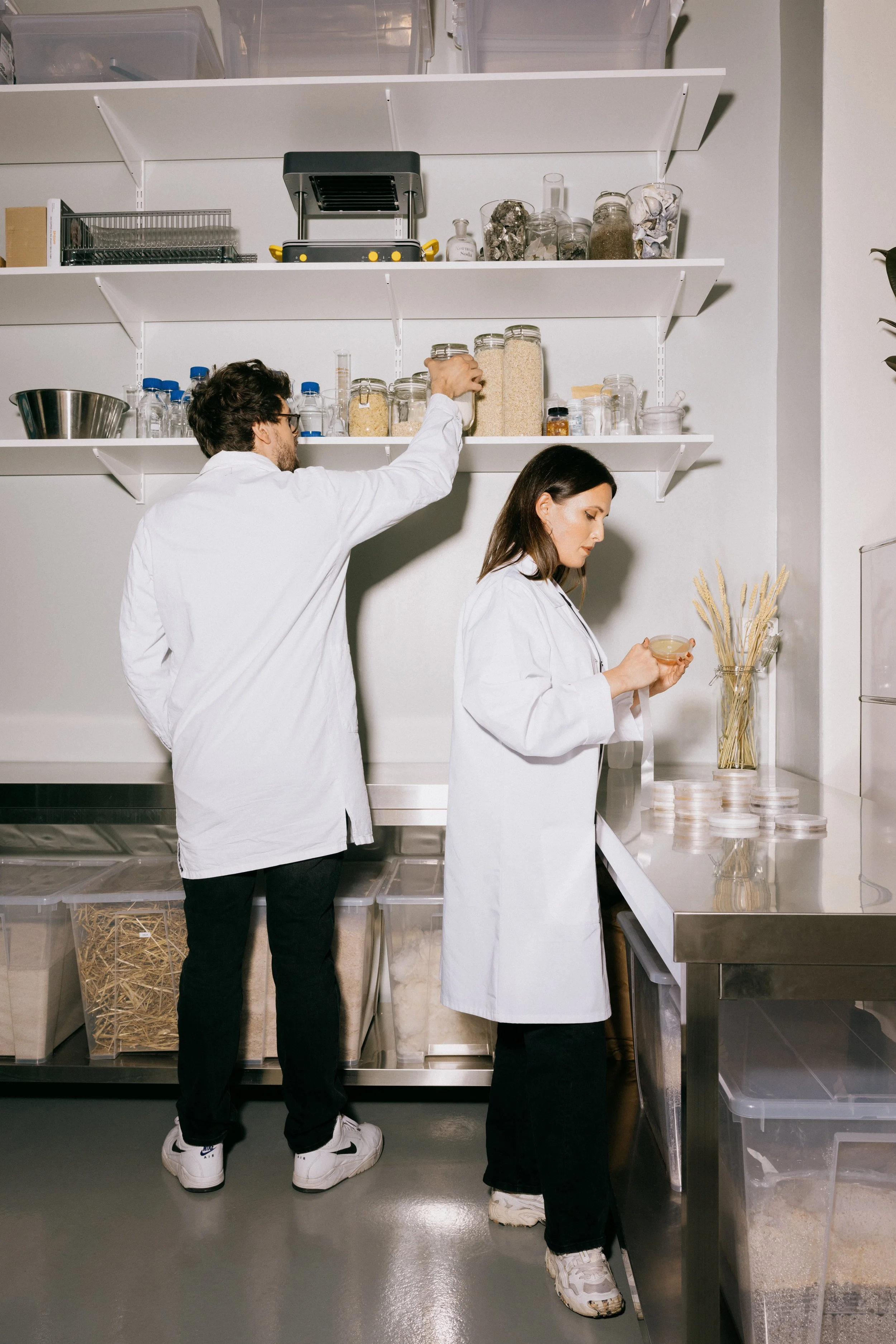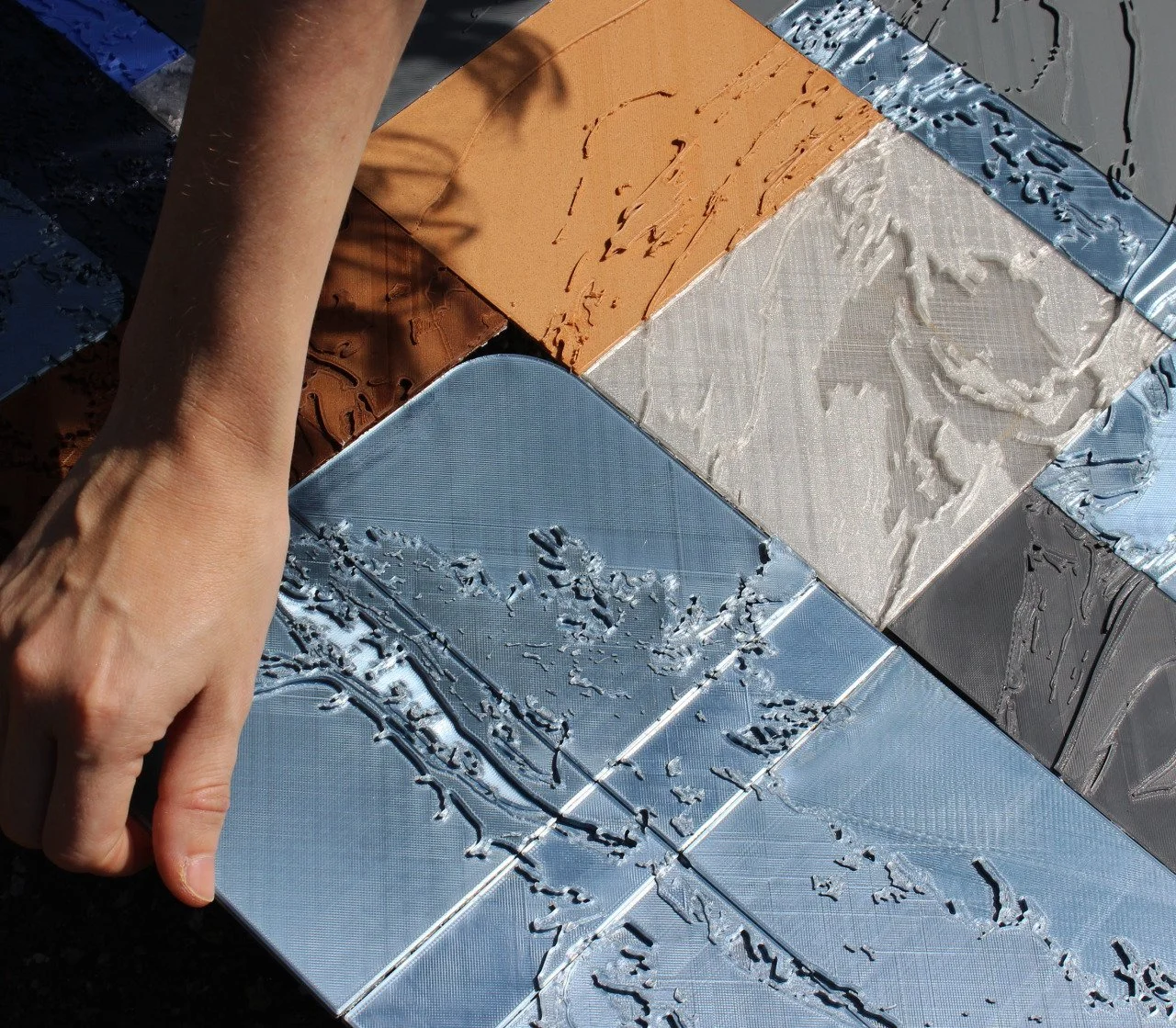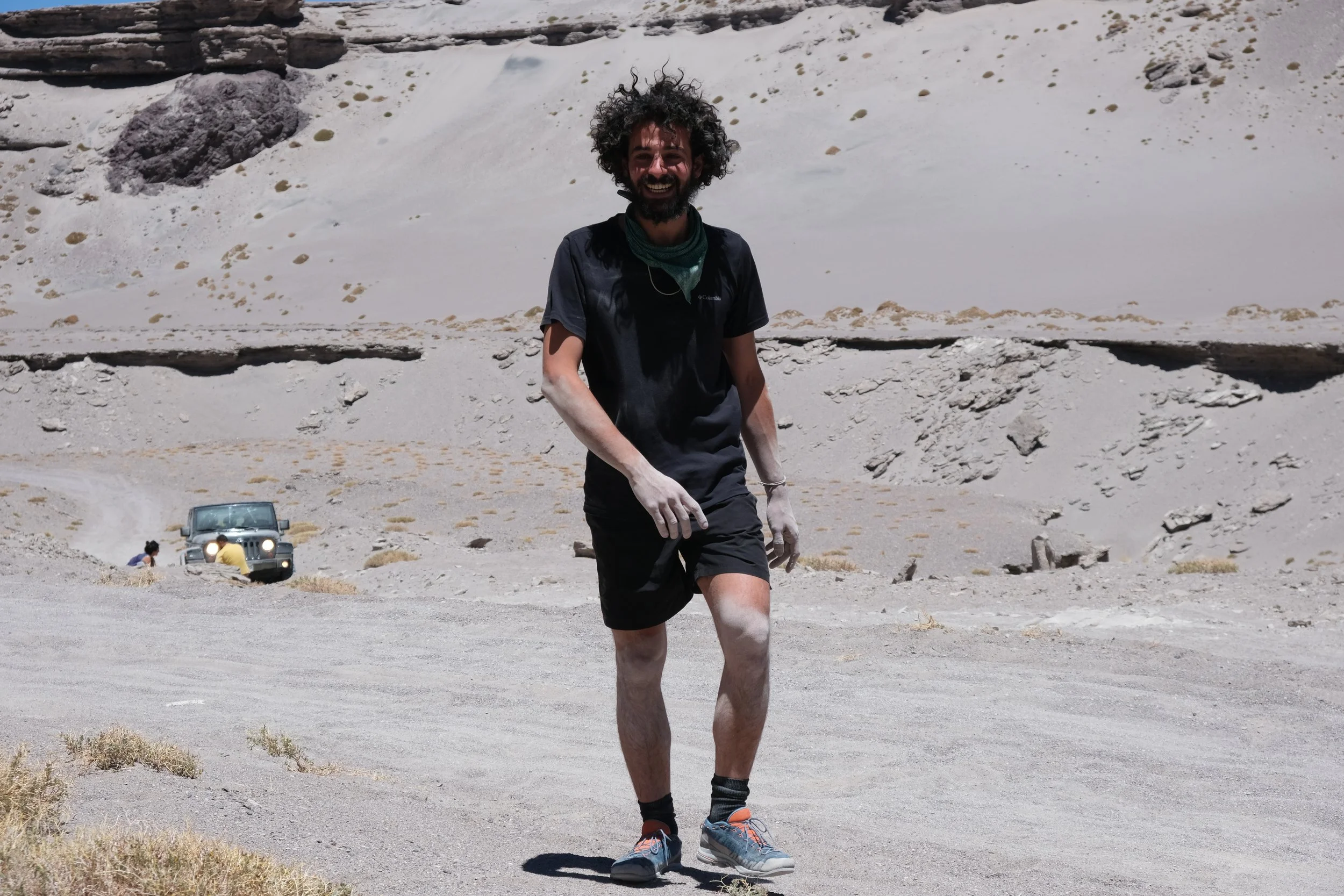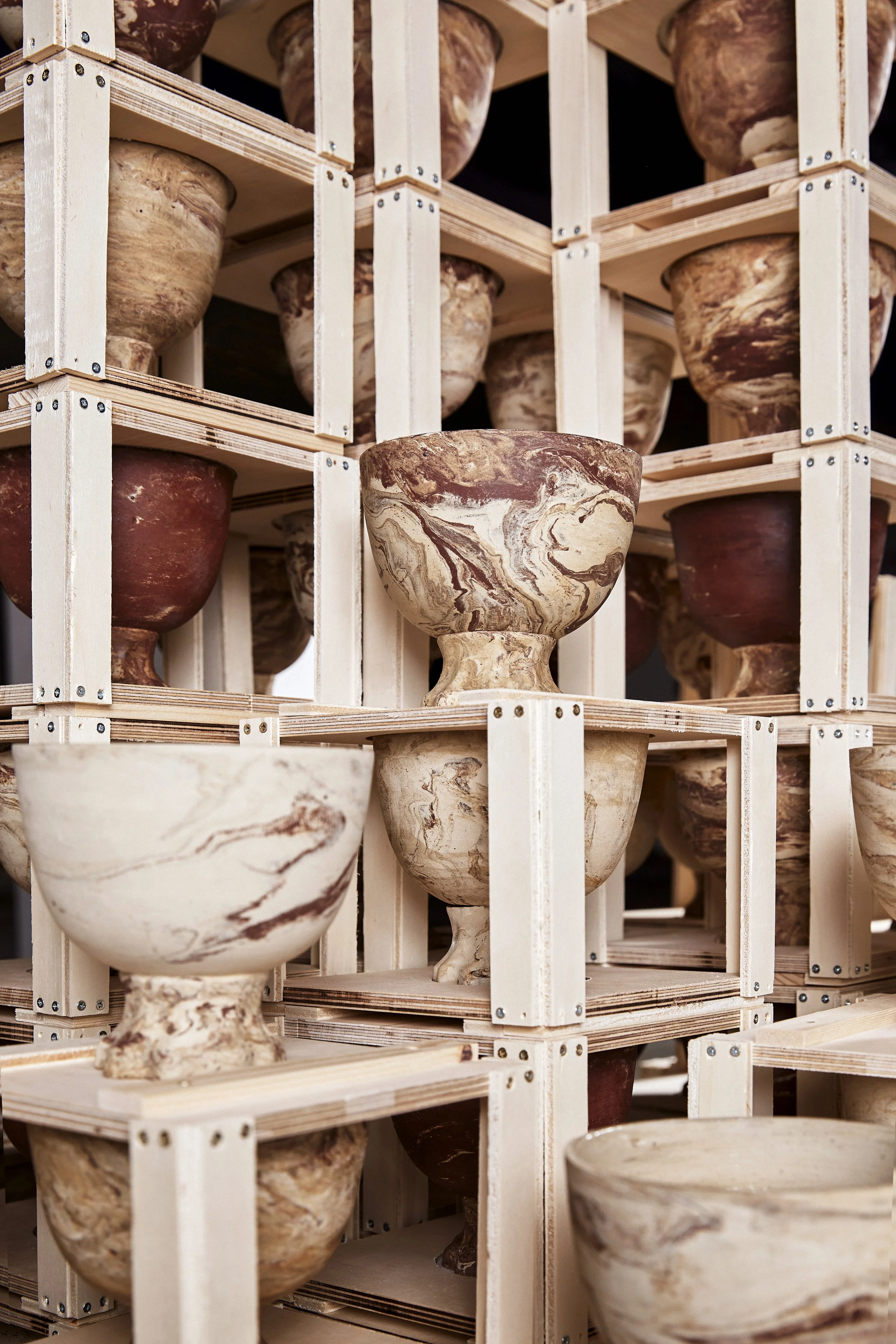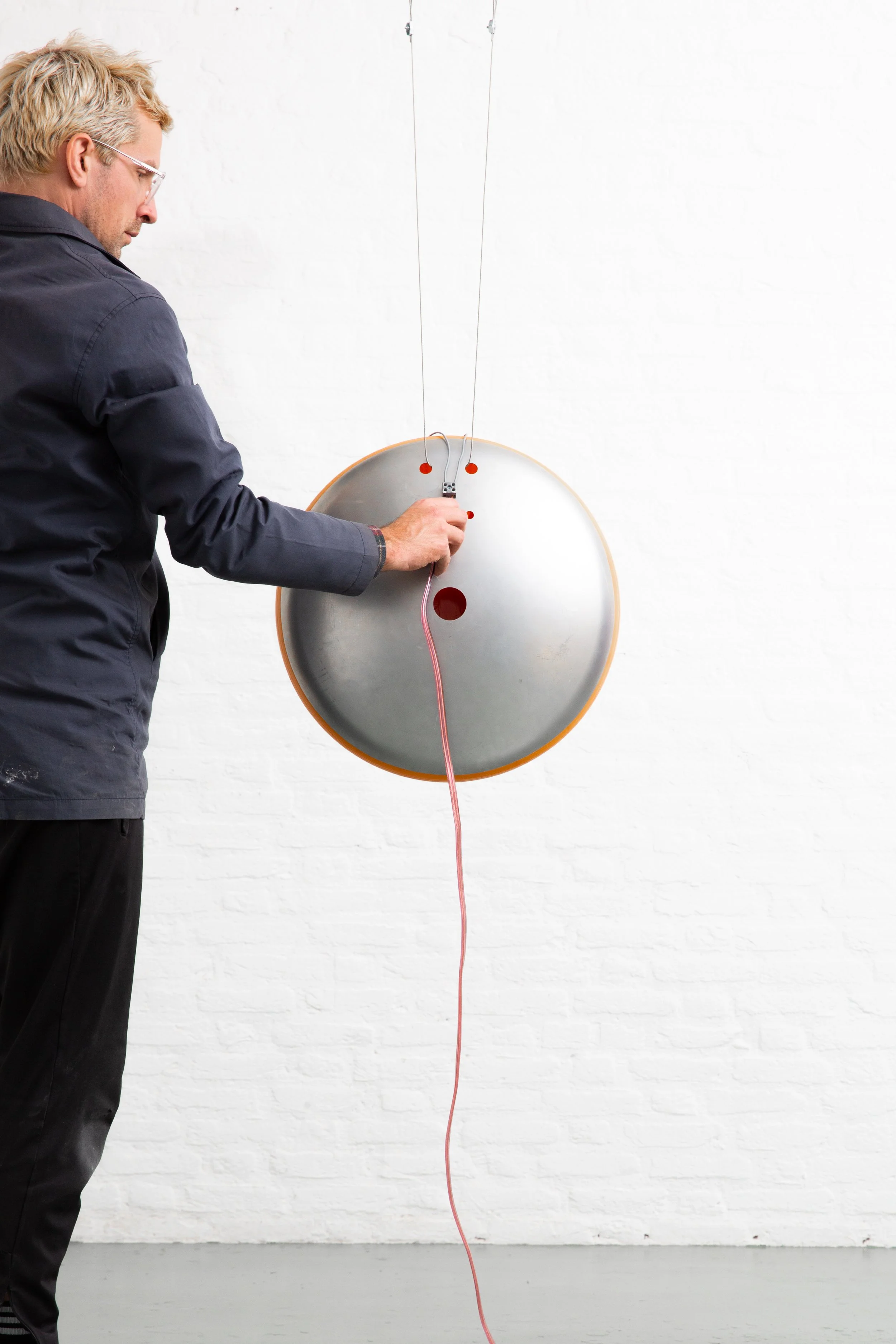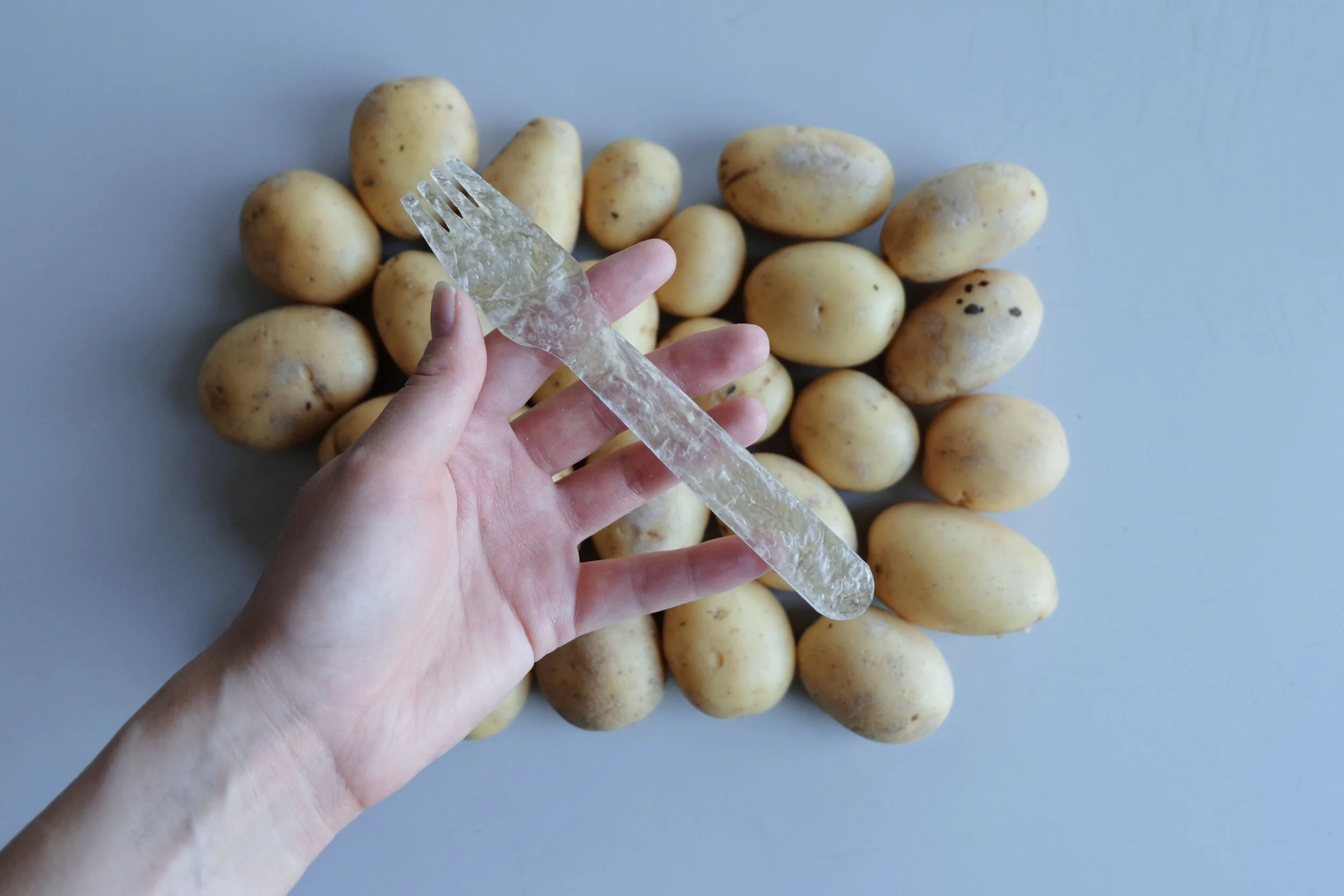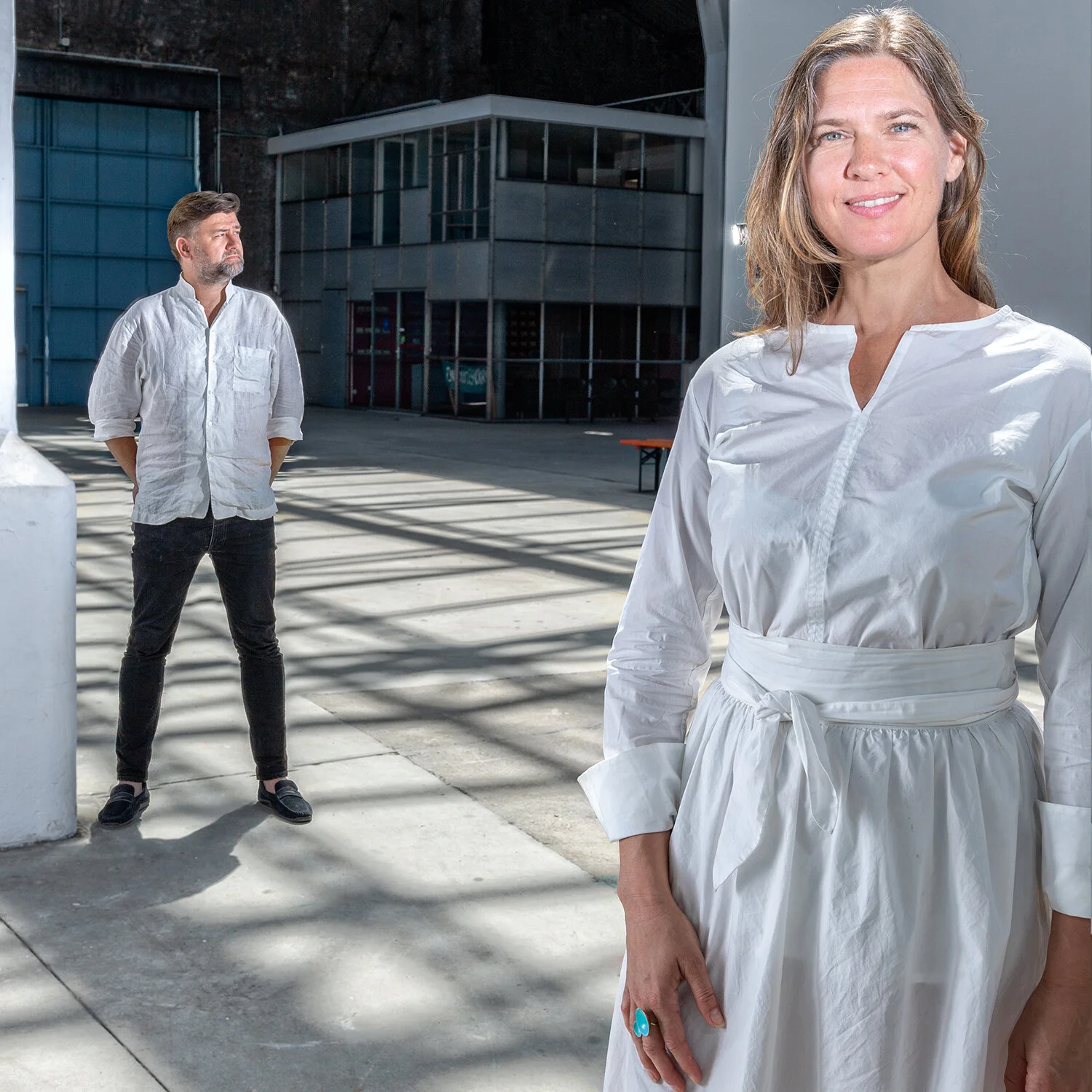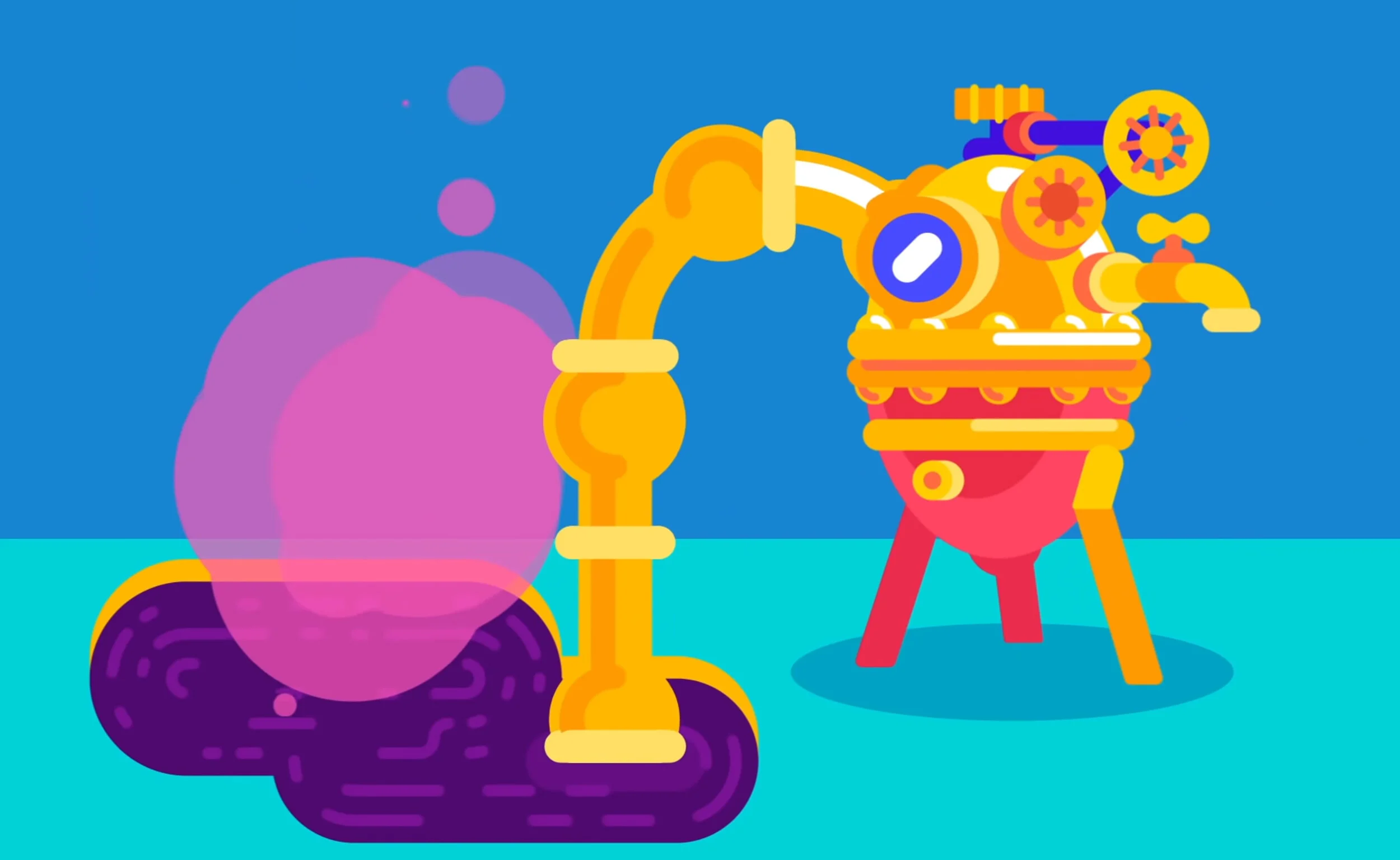Mycela Oslo - Believing in a Fungi Future
Photo credit: Julie Hrncirova
On a warm summer day, Elementa visited Mycela, consisting of Sondre Eng, Renée Isabel Jung and Maria Aaslund in their studio at Tøyen in Oslo. Over buns and coffee, we got to know their concept a bit better.
#Maren: Hi Mycela! Who are you, and what do you do?
#Mycela: Mycela is an Oslo based mycelium studio and lab founded in 2020. By combining fungal mycelium and local waste, we develop self-growing biomaterials and design without compromising the wellbeing of people or the planet. As designers and producers, we need to rethink our whole manufacturing process. We need to design a new material world that moves away from the exploitation of non-renewable resources and towards working with renewable life.
Mycela works with research and development of the mycelium technology, prototyping of new mycelium products and commissioned projects for clients. All interior objects and spatial design is designed with the understanding of our genetic need to be connected to living natural environments. By sourcing and utilising local, agricultural and urban waste, the material has a minimal environmental footprint and puts the principles of circular design into practice. Mycelium material can be tailored for a range of uses within interior design, architecture, urban design and visual arts. All current production takes place in our Mycelium studio + lab in Oslo.
Photo credit: Julie Hrncirova
Photo credit: Julie Hrncirova
#Maren: Why did you choose mycelium as your material?
#Mycela: We believe nature is our greatest teacher that provides us guidance on how to live in symbiosis with the environment. The answer to many of our modern problems such as climate change, pollution and exploitation of people and animals lies right beneath our feet, deep in the soil where you will find our biggest ally: The Fungi!
Mycela develops new biomaterials by combining mycelium (the root structure of mushrooms) and local biobased waste, to grow a better alternative to traditional materials with high environmental impact. Mycelium acts as a natural glue that binds waste products together during its growth process. This results in a carbon-negative, toxic-free and 100% natural material grounded in circular principles. By using a living organism like fungi, we are able to transform untapped resources including waste products from agriculture, wood industry and urban environments into a regenerative material.
Photo credit: Julie Hrncirova
#Maren: What are the next steps for Mycela?
#Mycela: We are working on funded research projects to further develop the performance of the mycelium material. This involves laboratory testing where we try out different combinations of fungi and bio-based waste. The fungi we use are called decomposers as they thrive on dead organisms. Different species of wood, straw etc. are tested to see how well it works as an energy source for the fungi. If it grows well on it, the mycelium will bind the mass together and create a solid material. The best selection of material then goes through external testing to make sure it has all the superior qualities we want to achieve.
Initial testing of the mycelium material shows that it's naturally sound-absorbing, insulating and water resistant. It’s also remarkably lightweight and fire-resistant, even if it consists of mostly wood. Since the material is grown through a natural, biological process, each piece has its own distinctive aesthetics. Mycelium material can look like white velvet or resemble dark travertine stone. The result depends on how the growth process is controlled and the combination of fungi and waste.
Mycelium material is totally unique and fairly unexplored in a design context. We are therefore working with designers and architects to identify areas of usage. We are currently working on prototyping functional interior solutions with the aim of making them commercially available over the next years.
Until then, we also do bespoke projects where the mycelium material caters as a functional, sustainable and decorative element - with a great story about the fascinating fungi included! The mycelium can be shaped into a sculpture, wall panel or a specific interior object for office or retail spaces, restaurants or other venues where you want to make a real statement about your commitment to regenerative and sustainable design. Our energy is focused on developing circular design solutions that adapt to changing societal needs over the years to come. We believe the future is fungi!
Photo credit: Julie Hrncirova
Photo credit: Julie Hrncirova
Check out Mycela´s Instagram to see more of their work and upcoming projects!







